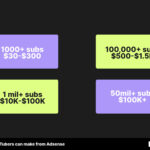Understanding your savings options is crucial in today’s financial landscape. A money market account, often abbreviated as MMA, is a type of savings account offered by banks and credit unions that typically pays a higher interest rate than a traditional savings account. But what exactly is a money market account, and how does it work? Let’s break down the Money Market Account Definition and explore its key features.
Key Features of Money Market Accounts
Money market accounts offer a blend of features from both savings and checking accounts, making them a versatile option for savers. Here are some defining characteristics:
Competitive Interest Rates
One of the primary draws of a money market account is its interest rates, which are generally higher than those offered on regular savings accounts. These rates are often tiered, meaning you can earn even more as your balance increases. This makes MMAs attractive for those looking to maximize returns on their savings while maintaining safety.
FDIC Insurance
Just like traditional savings and checking accounts, money market accounts at FDIC-insured banks are protected by FDIC insurance. This means your deposits are insured up to $250,000 per depositor, per insured bank, providing peace of mind and security for your funds.
Liquidity and Access
Money market accounts offer good liquidity, allowing you to access your funds relatively easily. While they may come with some restrictions compared to checking accounts, you typically have check-writing privileges and debit card access, though there might be limits on the number of transactions per month.
Minimum Balance Requirements
To earn the higher interest rates and avoid fees, money market accounts often require a minimum balance. This minimum can vary by institution and account type, so it’s important to compare different options and ensure you can comfortably maintain the required balance.
Transaction Limitations
While offering some transactional flexibility, money market accounts typically come with transaction limits. These limitations, often set by federal regulations, usually restrict the number of certain types of withdrawals and transfers you can make per month. These restrictions are in place because money market accounts are technically classified as savings accounts, not transaction accounts.
Money Market Account vs. Savings Account
It’s easy to confuse a money market account with a regular savings account. While both are designed for saving money, key differences exist. Money market accounts generally offer higher interest rates and may provide limited check-writing or debit card access, while savings accounts typically have lower interest rates but might have fewer restrictions on withdrawals and lower or no minimum balance requirements.
Conclusion
In summary, a money market account definition highlights it as a savings account that typically offers higher interest rates than traditional savings accounts, often coupled with limited check-writing and debit card access. They are FDIC-insured and provide a safe and liquid place to grow your savings. If you’re looking for a balance between higher returns and accessibility for your savings, a money market account could be a smart choice to consider.
